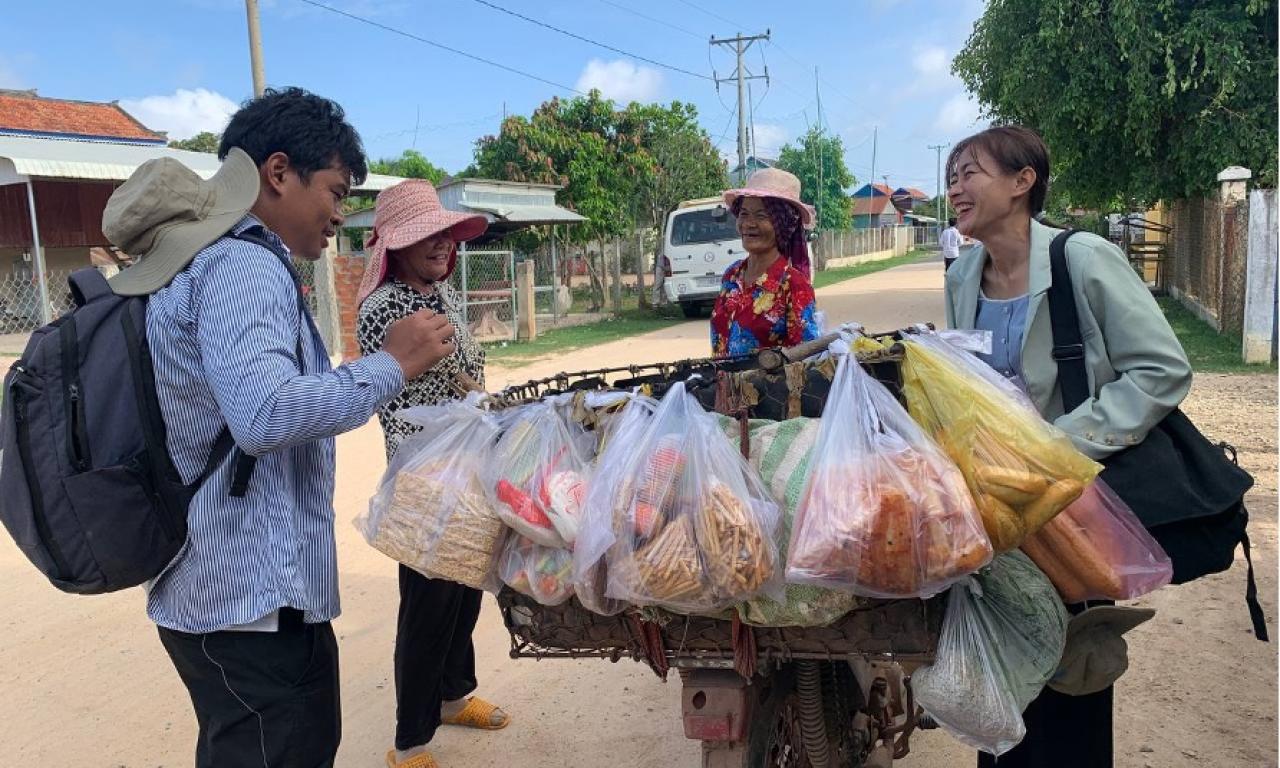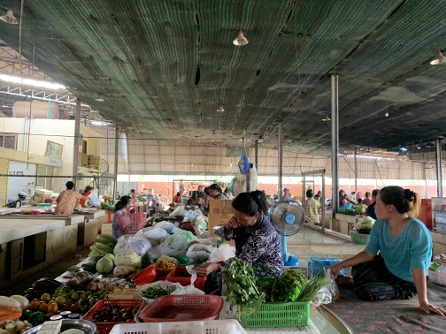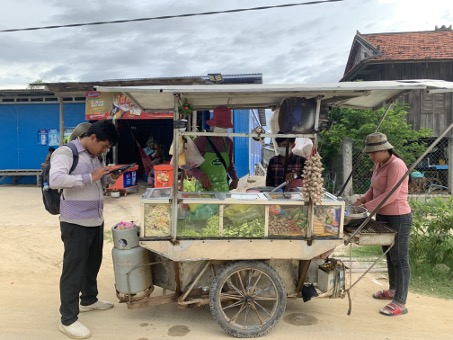
- A survey of rural food vendors in Cambodia, conducted under the CGIAR Initiative on Asian Mega-Deltas, provided new insights into the food demand, consumption patterns, and challenges and food supply chains in rural environments.
- Rural food vendors in the Mekong Delta, mostly women, sold foods ranging from fresh, unprocessed foods to prepared meals to highly processed snacks. The typology of vendors also partially determines the type of food sold.
- The outputs from this study will guide the development of training materials and knowledge products that can support other researchers to undertake similar work in other countries.
Home to 177 million people – 36 percent of them poor and vulnerable – the Asian mega-deltas of Mekong, Ayeyarwady, and Ganges-Brahmaputra are biodiverse, fertile, and productive food baskets that support millions within and beyond the deltas. With the potential to improve the sustainability of local food systems, they ensure the food, nutrition, and livelihood security for millions of others beyond the delta residents themselves.
However, deltaic food systems are experiencing serious impacts of climate change, including more frequent and intense floods, salinization, water shortages, and extreme weather events. These challenges will impact economic growth while exacerbating urbanization and migration challenges, triggering new poverty traps and emerging hotspots of hunger in the country.
Deltas are therefore at a critical juncture as millions of food system actors must confront threats to their food, nutrition, and livelihood security, especially from the effects of climate change. The CGIAR Initiative Asian Mega-Deltas (AMD) has been implemented to develop resilient, inclusive, and productive deltas that maintain socio-ecological integrity, adapt to climatic and other stressors, and support shared prosperity.
Studying rural food environments in Cambodia

In Cambodia, work package 2 of AMD aims to understand socially differentiated nutrition implications and design appropriate interventions that understand the nutrition-sensitive deltaic food systems. It includes a household livelihood and consumption survey, which details what households in this delta consume, in addition to a survey on rural food vendors.
The study on Cambodia’s rural food vendors was done concurrently with the household survey and aimed to understand the rural food environment by capturing the types of foods available to the population of interest. The rural economy is fundamentally dependent on informal food sellers and small-town market vendors who provide easy access to a wide variety of foods, from fresh vegetables to cooked food to ultra-processed snacks.
The Cambodian population is in a vulnerable position and facing a shift in diet from meals prepared at home to food away from home, which is leading to a nutrition transition at the household and population levels. Both the household survey and food vendor survey were conducted in the provinces of Takeo, Prey Veng, Kandal, Svay Rieng, and Kampong Thom.
In June 2023, WorldFish worked with two enumerators from the Royal University of Phnom Penh, Bun Phanna and Chantha Chroeng, to survey 212 food vendors in the selected provinces across rural Cambodia.
“The questionnaire focused on learning about the types of food vendors in each village, the frequency of mobile vendors who pass by the village, and the types of food available for sale, among other information,” said Ben Wismen, project manager at WorldFish.
A snapshot of Cambodian rural food vendors

In order to better understand Cambodia’s rural food environments and the types of foods available in rural areas along the Mekong Delta, a variety of details about the vendors were collected. The study surveyed different foods that were sold, such as fruits, vegetables, meat, grains, fresh fish, salted fish, and fermented vegetables, as well as fried food, packaged snacks, sausages, and canned beverages.
The food vendors were also categorized into three types, including stationary vendors who had a fixed location that could not be moved, mobile vendors who consistently moved and only stopped when making a sale, and semi-mobile vendors who could easily move their products but often stayed in one location for a period of time.
Most food vendors were women who sold food as a primary income. A key observation from the team was that most stationary vendors tend to sell shelf-stable packaged foods while fresh foods are sold by mobile vendors, and semi-mobile vendors sell cooked meals or ultra-processed ready-to-eat foods.
The current research is one of the first to focus on rural food vendors, as opposed to those in urban settings, and this will lead to many possibilities for a way forward. The team observed a high number of vendors in rural areas indicating that food availability is not an issue in rural Cambodia. While fish, meat, fruits, and vegetables were available in most places, so were ultra-processed snacks and fried foods.
The team also observed several vendors who had poor food safety procedures. A follow-up study could potentially be conducted to gather further information regarding the vendors' methods for food safety and hygiene. Given that this type of survey has not been done before – to the best knowledge of the authors – and will likely become more common in rural areas across the globe, the team will create a training manual on the methodology for other researchers who plan to study rural environments.
Overall, this survey will support the findings from the household livelihood and consumption survey also completed by AMD work package 2 and be used as a reference for future rural food environment studies by other researchers.
This study was undertaken as part of the CGIAR Initiative on Asian Mega-Deltas (AMD) under the work package focusing on developing nutrition-sensitive deltaic food systems led by WorldFish, in partnership with the International Rice Research Institute, International Water Management Institute, and Alliance of Bioversity International and CIAT in Bangladesh, Cambodia, and Vietnam.
